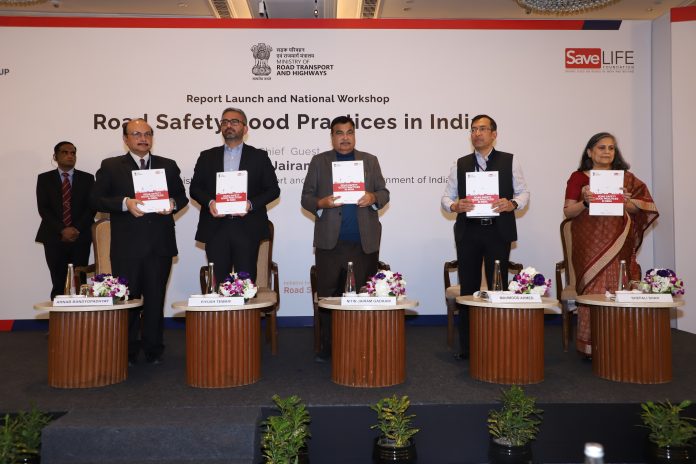New Delhi, December 11, 2023 : Scaling successful corridor-based road safety practices can save as many as 40,000 lives each year. This was revealed in a study released earlier today by the Hon Minister of Road Transport and Highways, Shri Nitin Gadkari.
Undertaken by SaveLIFE Foundation in close cooperation with the World Bank Group and the Ministry of Road Transport and Highways (MoRTH), the study, titled “Road Safety Good Practices in India”, showcases road safety success stories from across the country. These are interventions that have led to a measurable and, in many cases, a remarkable reduction in road crash fatalities on target road corridors.
The report highlights good practices, such as the National Highway 48 (Old Mumbai-Pune Highway) Zero Fatality Corridor (ZFC) project, that registered a remarkable 61% decrease in fatalities between 2018 and 2021. Similarly, the Belgaum Yaragatti Highway’s Safe Corridor Demonstration Project (SCDP) in Karnataka recorded a notable 54% reduction in deaths over three years from 2015 to 2018. Most remarkably, the Sabarimala Safe Zone has maintained zero road crash deaths between 2019 and 2021, serving as a blueprint for pilgrimage sites nationwide. In each of the aforementioned cases, a concerted effort was undertaken to analyse road crashes and take a 360-degree approach to address them. These include enhancement of road safety furniture on the road, effective and targeted enforcement, and improvements in emergency medical response.
The report, released in the presence of senior officials from Central and State Governments, categorises interventions as corridor-based, network-based, and state-based, covering nine corridor-based, two city/network-based, and two state-based interventions across ten states. The report not only documents “what has worked” but also “how it was done,” to enable effective adoption and replication of the good practices.
To gather these practices, all the relevant departments (i.e., police, transport, health, etc.) of all 28 States and 8 Union Territories across India were contacted with questionnaires. Further, secondary research was conducted to understand the national road safety landscape, locate promising road safety endeavours, and supplement the data shared by States. The responses from States and the findings from secondary research have been analysed and presented in the report.
Speaking about the report, Shri Nitin Gadkari said, “This timely report by SaveLIFE Foundation, with support from the World Bank Group and MoRTH, aims to chart a safer course for India’s roadways. Its comprehensive analysis will serve as a resource for policymakers, administrators, and stakeholders to identify and replicate strategies that have been effective in reducing road crash deaths. I am certain that the report will serve as a much-needed catalyst for fostering collaboration and encouraging the sharing of knowledge, through its practical solutions, drawn from real-world examples, that can be tailored to suit the diverse conditions found throughout India. By honing in on successful interventions specific to certain corridors or localities, the report provides a nuanced understanding of what works- and what can work elsewhere if appropriately adapted.”
“Road crash deaths in India have increased by 7% between 2018 and 2022, underscoring the need for India to enhance the ongoing efforts to achieve a sustainable reduction in deaths. This report has been created to act as a guidebook for states to replicate practices that have shown notable improvements in road safety. We hope that the standardised formats and templates that the study puts forth will allow for cross-functional knowledge exchange and more informed initiatives at the ground level” added Piyush Tewari, Founder and CEO of SaveLIFE Foundation.

